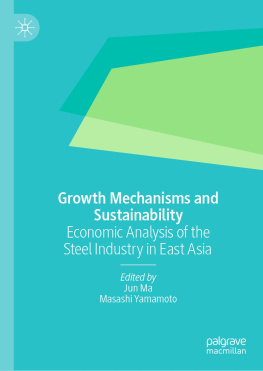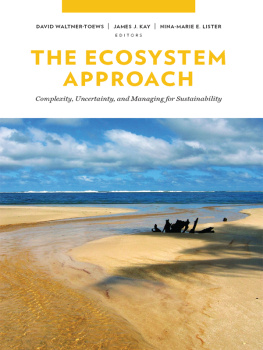Chapter 1
The Regional Evaluation on the Vitality of the Entrepreneurial Ecosystem in China
- Sae Woon Park
 https://orcid.org/0000-0003-1507-7177
https://orcid.org/0000-0003-1507-7177
Changwon National University, South Korea - Xingqun Xue
Dalian University of Technology, China - Sunhae Lee
 https://orcid.org/0000-0001-8325-1582
https://orcid.org/0000-0001-8325-1582
Changwon National University, South Korea - Xinya Xu
Dalian University of Technology, China - Yuanyu Zeng
Dalian University of Technology, China
ABSTRACT
With the development of business ecosystems and the depth of entrepreneurship research, the research based on the ecosystem has been popular. The theory of entrepreneurial ecosystem provides an overall perspective for the research of entrepreneurial activity. However, how to measure the system vitality still remains an unsolved problem. This study chooses diversity, density, and connectivity as the dynamic characteristics to construct the assessment index system of a regional entrepreneurship system. The study also takes the old industrial bases in Northeast China, Liaoning Province as an object. It calculates the vitality score and puts forward some targeted suggestions for improving the vitality of entrepreneurial ecosystems in Liaoning Province.
INTRODUCTION
With the rapid development of mass entrepreneurship and innovation, entrepreneurs, governments and scholars are gradually realizing the importance of the entrepreneurial ecosystem (EE) (Mack & Mayer, 2016). EE can promote enterprise innovation or the formation of new enterprises by creating a good environment, and achieve regional economic development (Bruton et al., 2010). The vitality of entrepreneurial environment directly affects the development of entrepreneurial activities. The establishment of a systematic and objective evaluation system for entrepreneurial vitality can play a guiding role in regional entrepreneurial activities, thus promoting the overall development of regional economy and improve the living standards of the citizens in the region (Acs & Armington, 2004). However, in the existing researches, there are still some deficiencies in the evaluation of regional entrepreneurial vitality. Although studies on social entrepreneurship activities from the perspective of business ecosystem continue to flourish, few studies can be found on a comprehensive measurement of the vitality of EE in provinces or cities, due to the limitations of research time and research level, which results in lack of pertinence and systematicness in the startup elements.
In order to solve these problems, this paper examines the dynamic evaluation system of business ecosystem. We construct three detailed indicators of the dynamic characteristics of EE: density, diversity and connectivity. Then we choose the appropriate data processing method and use the analytic hierarchy process(AHP) to build a scientific and reasonable evaluation system.
Making use of the established evaluation system, this paper conducts an empirical analysis on the vitality of EE in Liaoning province. The results show that Liaoning province has deficiencies in aspects of entrepreneurship atmosphere, scientific and technological innovation, talent training, entrepreneurship support services and others. Based on the evaluation conclusion, this paper puts forward some targeted suggestions such as strengthening innovation and entrepreneurship education, perfecting government system and improving service system. This paper has important practical value for developing regional economy by promoting entrepreneurial vitality of the old industrial base in the northeastern area, and pioneering theoretical contribution for evaluating the vitality of regional EE.
THEORETICAL REVIEW
Development of Entrepreneurial Ecosystem Theory
Connotation of Entrepreneurial Ecosystem
The study of EE originates from the integration of organizational ecology and entrepreneurship related researches. Moore (1993) put forward the concept of business ecosystem, which is defined as an economic association based on organizational interaction (Moore, 1993). Spilling (1996) first proposed the concept of EE to describe entrepreneurial activities within the market (Spilling, 1996).
With the continuous development of the concept of EE, scholars defined EE mainly from the perspective of ecology and network. Starting from the ecological perspective, Vogel (2013) believed that EE is composed of a variety of interdependent entrepreneurial entities (entrepreneurial enterprises, government agencies, etc.) and environmental elements (market, etc.) in a specific region, which coexist and interact to promote the generation of entrepreneurial activities (Vogel, 2013). Scholars from the perspective of network believed that various elements form an EE through network connection. Neck et al. (2004) used taxonomy method to divide EE into two parts: the institutional elements related to incubator in the university, government, professional support services, and intellectual resources; other elements supported by entrepreneurship (Neck, 2004). Cohen (2006) argued that the internet, infrastructure and entrepreneurial culture are the core elements of sustaining an EE. According to Isenberg (2010), EE is a network environment composed of various resources and government policies needed for entrepreneurship. Mason and Brown (2014) argued that EE is a series of interrelated entrepreneurial entities (entrepreneurial enterprises, investment institutions, universities, etc.) and entrepreneurial environment (policies, culture, etc.), which can improve performance through formal and informal connections. Spiegel (2017) believed that EE is a combination of social, political, economic and cultural elements to promote the development of start-ups in a region, which can encourage emerging entrepreneurs or other participants to take risks such as entrepreneurship and financing. Based on the synthesis of several definitions, the EE consists of economic actors and environmental factors existing in a region as influenced by geographical boundaries (Audretsch & Belitski, 2017).
Based on previous studies, this paper defines the regional EE as a dynamic equilibrium system composed of regional entrepreneurial enterprises and regional entrepreneurial environment that influences and co-evolves with each other.
Entrepreneurial Ecosystem Factors
When the theory of EE was put forward, many scholars studied the concept and components of ecosystem. Neck (2004) divided EE into two parts: incubation-related institutions and entrepreneurial support institutions: the former promotes entrepreneurial enterprises, while the latter contains elements like universities, governments, scientific research institutions, capital services, infrastructure and entrepreneurial culture. Cohen (2006) believed that EE is mainly composed of universities, governments, professional service institutions, capital support institutions, human service institutions and other elements. Suresh and Ramraj (2012) argued that EE consists of moral, financial, technological, market, social, networking, policy and environmental support systems. Spigel (2017) believed that EE consists of 11 elements that belong to cultural attribute, social attribute and material attribute, which include entrepreneurial culture support, entrepreneur history, labor quality, investment capital, network, entrepreneurship mentor and model, government policy, university education, support services, basic material facilities and open market. The interaction between the elements promotes the development of EE.












